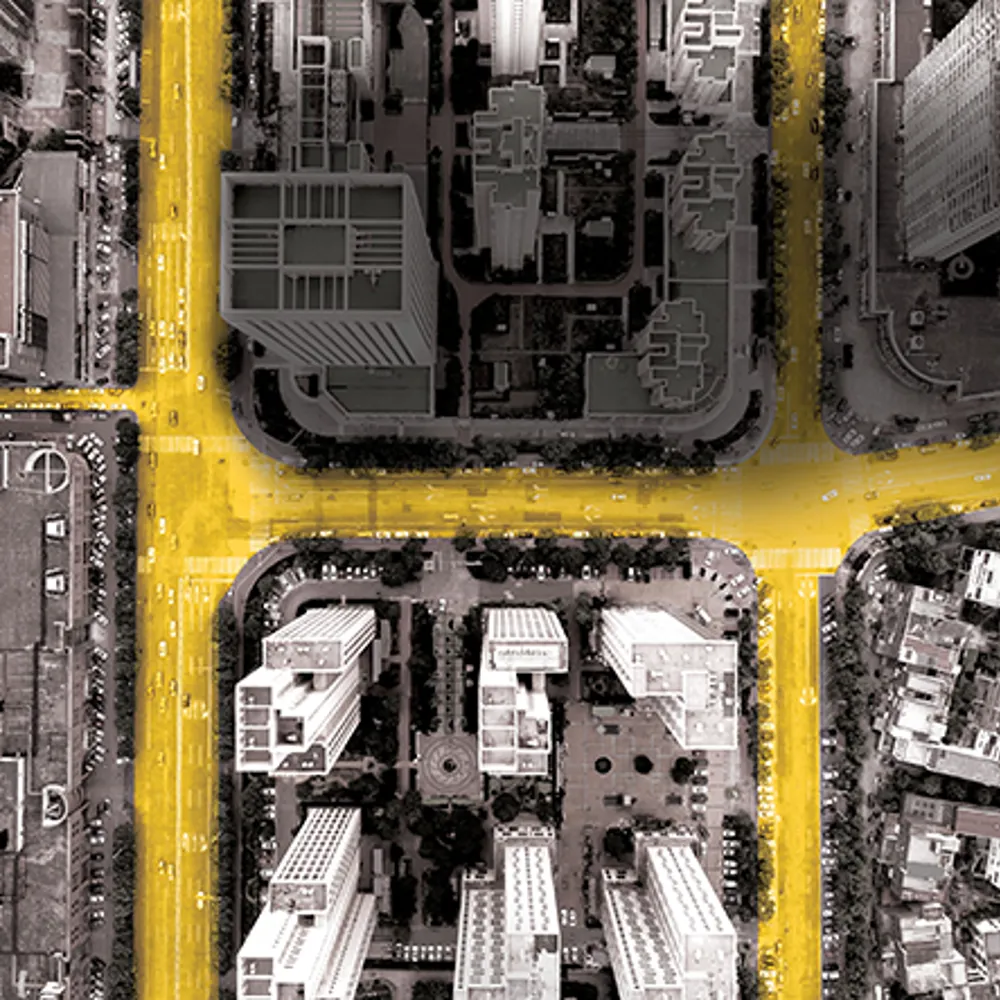How will Self-Driving Cars Impact Cities?
July 24, 2019
- Author: Robert E. Calem


July/August 2019
More articles in this issue:
Concurrent Expansion
According to current definitions set by SAE International and adopted by the U.S. Department of Transportation’s National Highway Traffic Safety Administration (NHTSA), self-driving for automobiles is defined in terms of levels.
There will be as many as 2.5 million Level 4 cars and 700,000 Level 5 cars moving around the planet by 2028, according to London-based research and analytics firm GlobalData (see “The Levels of Self-Driving Cars”). Moreover, in the year 2033, Level 4 car production will reach 6.5 million vehicles, and Level 5 production will reach four million, adding substantially to the cumulative totals, GlobalData forecasts.
The firm says self-driving vehicles will be the fastest-growing automotive sector by 2033, with annual sales of more than 11 million vehicles. But many automakers will skip Level 3 production entirely, leading GlobalData to anticipate production of fewer than one million of those vehicles in 2033.
At the same time, there’s also the explosive growth of cities. By 2025, more than 80% of the U.S. population will live in an urban area, and 12 cities in China will be megacities — defined as having a population size greater than 10 million — GlobalData says. Worldwide, there will be 41 megacities by 2025, up from 24 at the start of this century. As a result, GlobalData projects the global market for smart cities technology to exceed $2 trillion by the next quarter-century mark, and this encompasses smart transportation technologies.
However, city planners and automobile businesses cannot underestimate the great technical challenges that city surroundings present to self-driving vehicles, says Dave Leggett, director of automotive services at GlobalData.
“There’s an awful lot of elements in how high levels of automation for vehicles in cities is going to play out,” he says. “Level 4 is a very high level of automation and the problems come really with the last 5% of what’s required” for utter reliability.
While an Airbus A380 airplane needs 2.5 terabytes of data to fly on autopilot across the Atlantic Ocean, a self-driving car requires 45 terabytes of data to enable a Level 4 autonomous vehicle to perform “routine driving tasks,” he explains.
there are lots of complicated scenarios that are still very difficult for software developers to build into the algorithms” that self-driving cars will need to function in cities, Leggett says.
“Intelligent transportation systems (ITS) will require a lot of infrastructure to enable vehicles to move around in an optimal way, to reduce congestion and be as environmentally efficient as possible,” Leggett adds. It will be the end of the next decade or later before “everything is in place to work to a level that is practical, and society is satisified.”
Dominique Bonte – managing director and vice president responsible for global automotive and IoT (Internet of Things) research at ABI Research in Brussels, Belgium – envisions a world where driverless cars are “the only type of traffic" allowed. The reason, he offers, is cities’ struggles with congestion and air pollution. Many cities in Europe have already implemented emissions zones where diesel and older, dirtier gasoline-powered cars are banned, he says.
Eventually they’ll be restricted to EVs (electric vehicles), “and of course the move to driverless shared vehicles is the logical next step, reducing the number of vehicles, reducing congestion and increasing safety,” Bonte says.
The link between shared self-driving vehicles and electrification is critical, he emphasizes, because only 2% of vehicles sold worldwide were electric in 2018 and EVs accounted for only 0.4% of cars on roads globally. Without a solid consumer base, the only way to grow EV sales will be through cities mandating EVs as part of shared driverless fleets, he says.
Additionally, another key, will be a communications infrastructure that connects traffic management systems to vehicles. This could include a city-licensed remote vehicle monitoring center staffed with teleoperators or run by artificial intelligence capable of taking over a vehicle if the need arises — a concept being pursued by companies like Designated Driver, which launched in March.
“It’s a much more managed way of thinking about mobility,” he says.
Further, Bonte imagines cities setting some manufacturers’ specifications for self-driving vehicles in fleets serving their populations. Plenty of options for customization exist on a city-wide level, including mandating that shared-ride service vehicles also be designed with cameras for neighborhood watch duties, he adds.
Stephen Bell, resident analyst at Chicago’s TU Auto, sees the development of self-driving cars as a marathon, not a sprint. Only a few places are conducive to self-driving cars and robo-taxis, he says, because there’s no common development roadmap cities and nations can follow.
“Robo-vehicles will increasingly be deployed and used in campus-type environments that are relatively easy to manage but will be a long time coming to cities in mass simply because they are one part of a much larger complex system,” he says.
Still, there is a clear connection between self-driving and smart city technologies, Bell says.
“As cities digitize and explore the use of IoT technology, heaps of data will be generated from street lighting, traffic, transit systems, road and transport infrastructure, which when combined with data from vehicles can mean a city could be mapped as a digital twin — enabling more efficient traffic management, less congestion and potentially less pollution.”

MAKING CITIES ROBOT FRIENDLY
Personal self-driving cars will be the last to emerge, and even autonomous ridesharing vehicles won’t gain popular acceptance anytime soon, says Kaan Ozbay, professor and director of the C2 Smart Center, in the department of civil and urban engineering at New York University’s Tandon School of Engineering.
Rather, the first self-driving vehicles on city streets are likely to be delivery vehicles and shuttles or buses, Ozbay says. Not only are the retrofits that make them autonomous inexpensive relative to the economic payback, but they won’t burden the city with major adaptations either. For instance, self-driving buses can use pre-existing dedicated lanes, and self-driving delivery vehicles can make their rounds during “off hours” when streets aren’t crowded.
His team at NYU Tandon is studying how self-driving buses can reduce congestion in the Lincoln Tunnel that connects Manhattan and New Jersey. They found that 20% more buses could use the buses-only lane if all were self-driving, he says. And in terms of the number of people carried, “that’s equal to building another tunnel for cars.”
To be sure, the real world does present some obstacles to such innovation, Ozbay concedes, suggesting that New York’s Port Authority Bus Terminal may not be able to contain 20% more arriving buses.
Indeed, the idea of autonomous-only zones is flawed, says Sharon Di, assistant professor in the department of civil engineering and mechanics at Columbia University, and a committee member of the Center for Smart Cities at Columbia’s Data Science Institute. The problem is that on the way to or from these zones a self-driving vehicle must cross paths with humans — either drivers or pedestrians — and may react in ways that can make traffic worse.
This is where smart city technology can help, Di explains, pointing to solutions such as V2X (vehicle-to-vehicle and vehicle-to-infrastructure) communications based on 5G cellular connectivity. She points to COSMOS, a National Science Foundation-funded project led by Columbia, NYU and Rutgers University that is testing 5G-based smart city technologies in West Harlem. Among those are applications to reduce the number of crashes which injure and kill vehicle occupants and pedestrians.
“Also, we are now doing research about what new features can be enabled by 5G in autonomous driving,” Di says. One example is a camera-based traffic management system that transmits instructions to a self-driving car regarding moving objects at an intersection — people, bicyclists and other vehicles — and how to operate more safely among them. The underlying data analysis is completed by the system’s camera in a scheme known as edge computing, which is technically more efficient than having the car itself do the analysis upon approaching the intersection, she says.
Similarly, a New York City-based startup named COORD has developed a way to tell an autonomous car the best place to target curbside for picking up and dropping off-passengers, making deliveries, or merely parking and staying.
Typically, regulations for streets and curbs are communicated via old-fashioned (analog) signage, which can be difficult for an autonomous vehicle to read and understand on the fly. But COORD looks to fix this by creating “a digital curb” with information about roughly 30 items that govern curb usage (including signs, fire hydrants, bus stops, bike racks, and curb cuts, ramps and paints) saved to a unique data format that can be stored in the vehicle’s memory. The resultant data file also integrates a city’s municipal regulations.
“Today, a human driver makes that judgment. Sometimes they follow the rules, sometimes they
don’t,” says Stephen Smyth, COORD co-founder and CEO. “But going forward, as an autonomous vehicle essentially must follow the rules, it won’t have the luxury of interpretation that a human driver perhaps has,” he adds. So COORD wants the vehicle to “make a better decision, faster,” he says.
COORD has created digital curbs for portions of five U.S. cities: New York, Los Angeles, Seattle, San Diego and San Francisco. The goal is to have support in all major cities across the U.S. and Canada by the end of this year, Smyth says.
Although it’s unique, COORD’s file format has also been shared openly, because the company’s philosophy is that curb asset data should be public. “We don’t just see it as a parking space. We want it to be seen as a fully dynamic, digital thing,” he says.
“Everybody focuses naturally on an autonomous vehicle in motion, and undoubtedly that is the big challenge,” Smyth said. “But it would appear that the challenge is increasingly getting solved. The next challenge is how do these vehicles interface with the traditional physical world beyond traffic lights and making the turns safely and so forth.
“The curb space is that next frontier for the integration of autonomous vehicles into cities,” he says.
Join our community of innovators and shape the future of technology.



